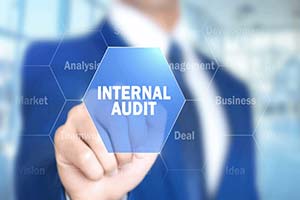Fundamentals of Electrical Substation and Switchyard Design, Safety and Maintenance
HomecoursesEngineering, Instrumentation & MaintenanceFundamentals of Electrical Substation and Switchyard Design, Safety and Maintenance
Course Fee:
₦350,000.00
Course Overview
The main objective of this Fundamentals of Electrical Substation and Switchyard Design, Safety and Maintenance course is to empower professionals with:
• Understanding the basic purposes of electrical substations and switchyards
• Differentiating the different types of electrical substations and switchyards
• Grasping different elements in the design of switchyards and electrical substations
• Learning fundamental rules and guidelines used in the generation, transmission and distribution of electric power
• Identifying and operating key equipment used in substations and switchyards
• Training in various layout options for switchyard apparatus
• Analysing earthing methods and lightning defence mechanisms for switchyards
• Using case studies and practical examples in planning their switchyard resources
Course Content
THE ROLE OF SUBSTATIONS IN AN ELECTRICAL NETWORK
• Introduction to networks
• Different voltages in a network
• Types and configurations of substations
• Optimizing the location of a substations
• Outdoor, GIS, and Indoor substations
• Substations as network nodes
• Substation types based on their placement in the electrical network
• Configurations of HV substations based on their bus layout
• Load assumptions for residential and commercial consumers
• Conservational issues in the layout of a switchyard and ways of recovery
OVERVIEW OF SWITCHYARD EQUIPMENT AND THEIR SPECIFICATIONS
• Primary equipment
• Layout options
• Busbars
• Disconnectors
• Structures
• Sectional and security clearances and their effect on the layout
• Design of busbars (strung/tubular) and interconnections between equipment
• Interconnecting cables and use of marshalling kiosks
PROTECTION DESIGN FOR SUBSTATION
• Brief outline of protection
• Protection coordination
• Protection of transformers
• Busbar safety
• Feeder safety
• Current transformers requirements for protection
• Equipment requirements for substation automation
SUBSTATION EQUIPMENT FOR FAULT LIMITING
• Static VAR compensators
• Harmonic filters
• Fault limiting reactors
• Power factor compensation equipment
• Equipment design and ratings
• The layout of the apparatus in a switchyard
EARTHING SYSTEM AND LIGHTNING PROTECTION OF SWITCHYARDS
• Basics of functional and protective earthing
• Touch and step voltages in substations
• Importance of the switchyard fence in the earth grid
• Safety mesh at operating points
• Purpose of the earth grid in conductor sizing and mesh spacing
• Role of shield wire and lightning masts
• Pros and cons of incorporating the control building inside the switchyard earth grid
• Transferred voltage hazards
• Scheduling the isolation of outgoing services to avoid transfer voltage
• Typical configurations of lightning protection of switchyards
• Investigation of hazards with a cone of protection and rolling sphere techniques
• Selection of lightning arrestors-Types, class and ratings
SWITCHYARD CONTROL AND INTERLOCKING
• DC equipment configuration and specifications
• DC distribution for switchyard equipment
• Planning the area and related facilities for battery installation
• AC auxiliary power for switchyard systems and loads which need AC power
• Possible source options
• Battery calculations basis
• AC auxiliary circulation for switchyard gear and support systems
• The control scheme of disconnectors and circuit breakers
• Control interconnection approach
• Use of optical fibre-based control scheme
• Role and location of marshalling kiosks in different bays
SWITCHYARD FACILITY PLANNING
• Site preparation, levelling
• Earth resistivity measures and its importance in switchyard design verification
• Civil mechanisms such as equipment groundworks, cable trenches, control building, storm drains, and transformer oil collection pit
• Switchyard structures and their design prerequisites
• Substation fence and physical security
• Surveillance
• Planning water requirements and supply arrangement
• Fire protection, illumination and ventilation of the relevant areas and equipment
Methodology
The training methodology integrates lectures, interactive discussions, collaborative group exercises, and illustrative examples. Participants will acquire a blend of theoretical insights and hands-on practical experience, emphasizing the application of learned techniques. This approach ensures that attendees return to their professional environments equipped with both the competence and self-assurance to effectively implement the acquired skills in their responsibilities.
DATE:
1ST BATCH: 27th – 30th Jan, 2026
2ND BATCH: 19th – 22nd May, 2026
3RD BATCH: 15th- 18th Sept, 2026
Course Category
- Human Resource and Admin
- Finance and Accounting
- Internal Audit and Fraud Control
- Stores, Procurement and Supply Chain
- Information Technology
- Aviation and Maritime
- Banking, Investment and Insurance
- Business Communication
- Construction Management & Civil Engineering
- Engineering, Instrumentation and Maintenance
- Entrepreneurship and Business
- Hotel & Hospitality Management
- Law and Contract Management
- Management and Leadership
- Project Management
- Public Relations
- Public Sector
- Sales, Marketing & Customer Service
- Secretaries & Personal Assistants
- Transport & Logistics
- Security and Safety
More Courses
VENUE
25, Queen street, Alagomeji Bus Stop, Yaba, Lagos









